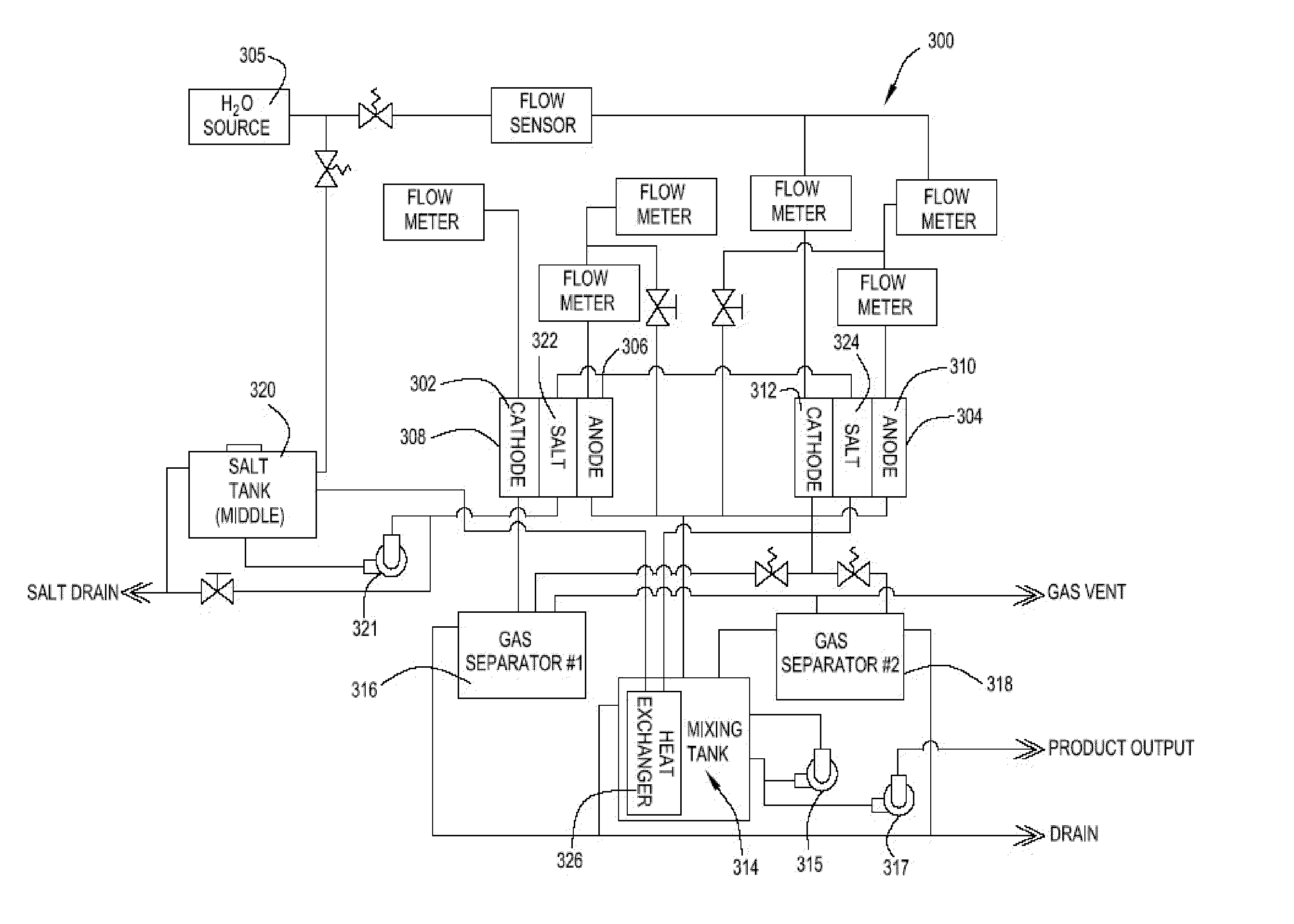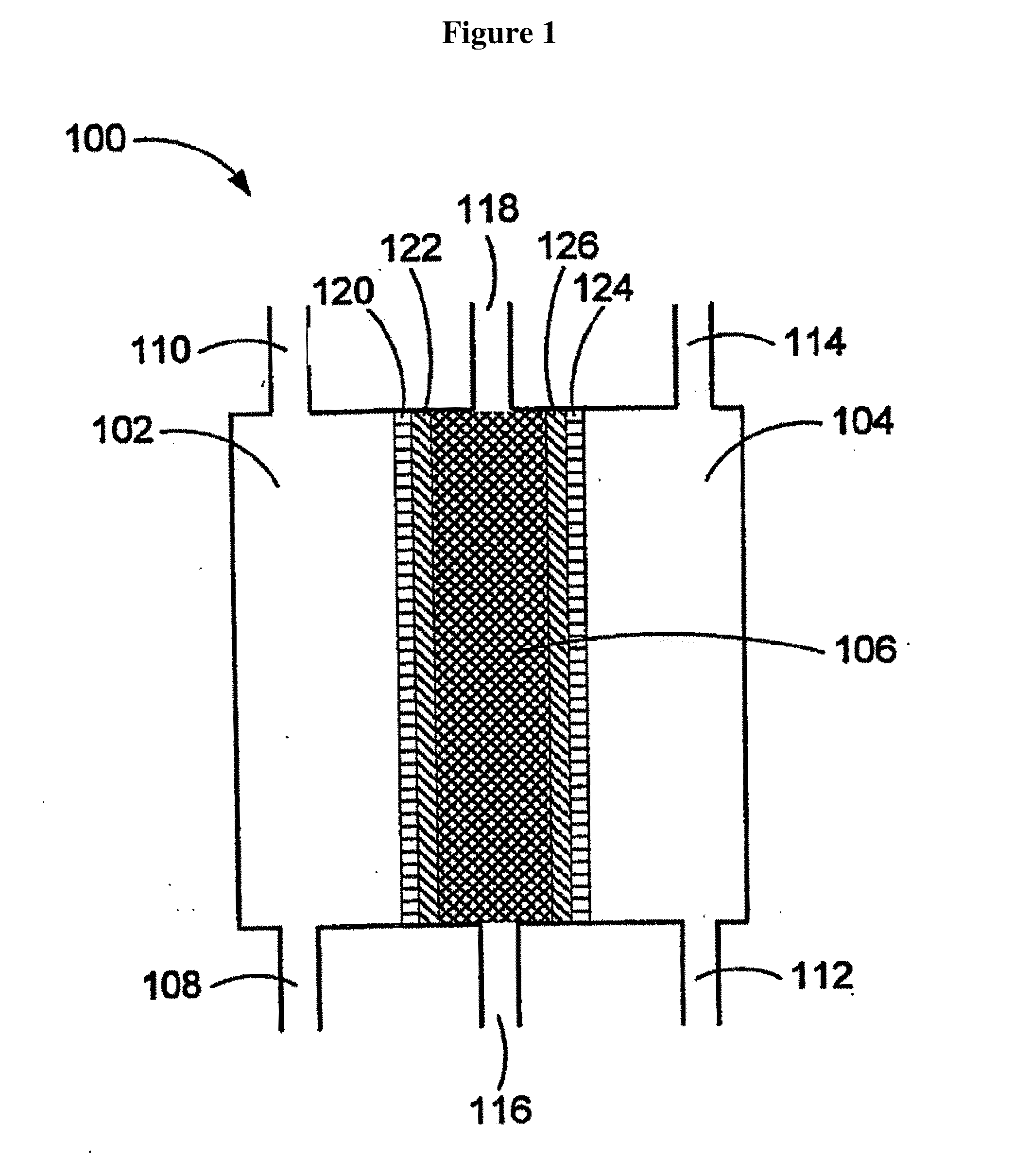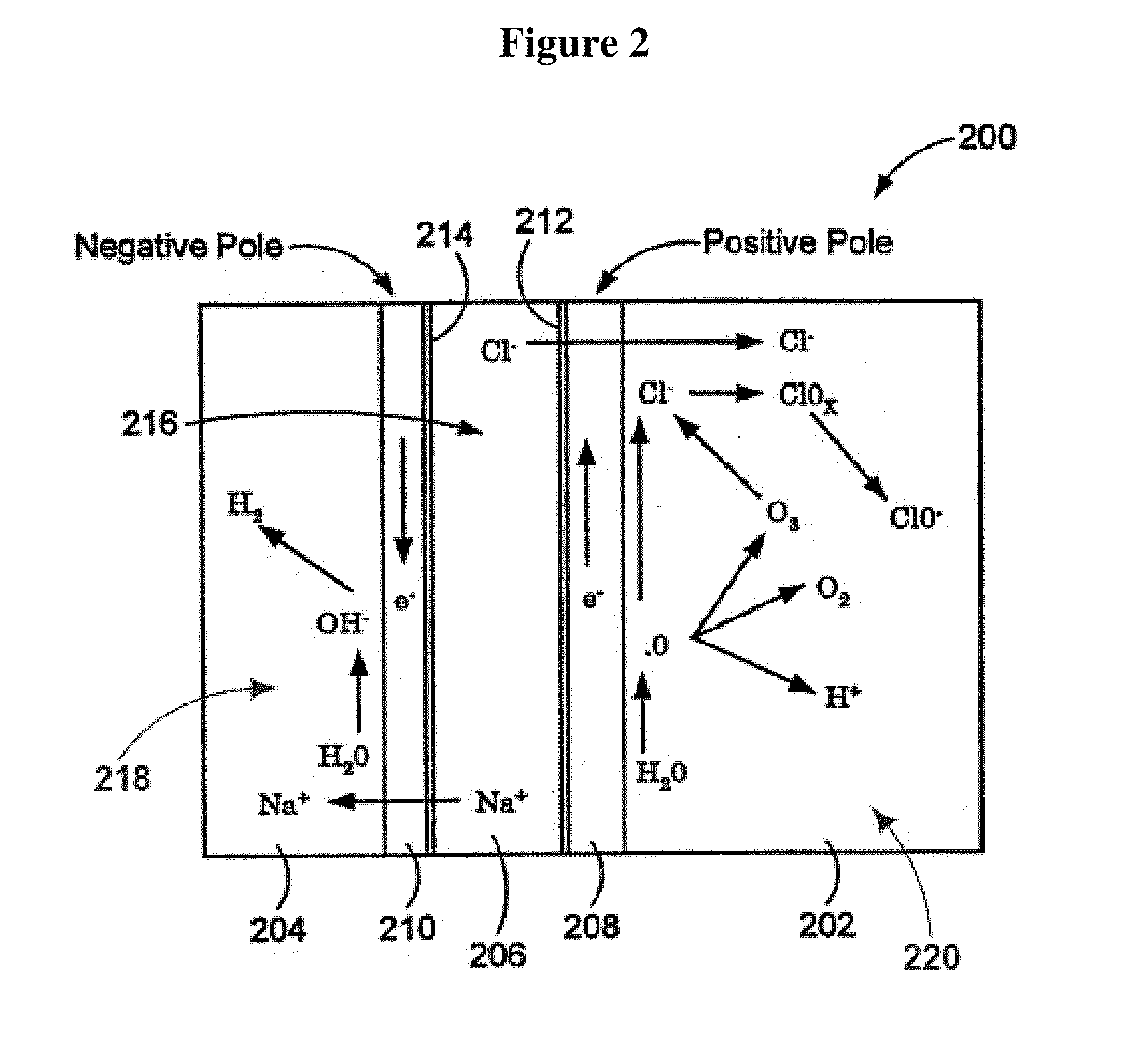Methods of treating or preventing biofilm associated infections with free available chlorine free available chlorine water
a technology of free available chlorine and biofilm, which is applied in the direction of antibacterial agents, drug compositions, aerosol delivery, etc., can solve the problems of ineffective treatment of biofilm infections with conventional antibiotic therapy, the number of medical devices being susceptible to colonization by bacteria, and the incidence of infection is significant, so as to reduce the concentration of bacteria, reduce the incidence of infection, and treat the incidence of bacterial infections
- Summary
- Abstract
- Description
- Claims
- Application Information
AI Technical Summary
Benefits of technology
Problems solved by technology
Method used
Image
Examples
example 1
[0154]This Example demonstrates that FAC waters are effective against planktonic Pseudomonas aeruginosa cells.
[0155]The killing efficiency of stable, pH neutral OIS-80 was comparable to those obtained with unstable, acidic FAC waters (pH 2.3-2.7). The efficacy of this solution and that of two other stable, pH neutral, FAC water with higher active oxychlorine content (i.e. OIS-125, 125 mg / L; OIS-200, ˜200 mg / L) were tested against P. aeruginosa cells grown planktonically and as biofilms.
[0156]The efficacy of the three FAC waters against exponential phase P. aeruginosa was tested. To do so, a bacterial suspension (approximately 108 CFU / ml) was incubated with FAC water for 20 sec., 5 min. and 20 min. at room temperature. The surviving population at each sampling time was determined on TSA. Under these conditions, an exposure time of 20 seconds was sufficient to completely inactivate P. aeruginosa (>99.999% reduction) with any of the three FAC waters. Thus, a log reduction of more than ...
example 2
[0157]This Example demonstrates that OIS-125 and OIS-200 are effective against stationary phase P. aeruginosa cells.
[0158]The efficacy of FAC water for stationary phase P. aeruginosa using penicylinders was studied. In brief, a film of bacterial cells dried on a surface of stainless steel carriers was exposed to the test substance for 10 min. Untreated carriers were used as control and for the two bacterial suspension tested, a total of 4.7×106 and 9.5×104 CFU / carrier were detected for the stationary phase P. aeruginosa control carrier population. Following the exposure, the carriers were transferred to vessels containing neutralizer medium and subsequently assayed for viability. Following treatment with OIS-125 and OIS-200, no growth of P. aeruginosa (ATCC 15442) was detected in any of the 60 subculture tubes following a 10 minute exposure period at 20° C. In contrast, growth of P. aeruginosa (ATCC 15442) was detected in 2 of the 60 subculture tubes following a 10 min exposure peri...
example 3
[0160]This Example demonstrates that OIS-80, OIS-125 and OIS-200 are effective against Pseudomonas aeruginosa biofilms.
[0161]Biofilms are considered to be highly resistant to antimicrobial agents. To determine whether FAC water is also effective in killing P. aeruginosa biofilms, P. aeruginosa was grown as biofilm in a tube reactor for six days under continuous flow. Mature biofilms were initially treated with FAC waters OIS-80 and OIS-200 having the lowest and highest concentration of chemically active oxychlorine species 80 and 200 mg / L) for 0.5-60 min. under flowing conditions to determine the time required to reduce the viability of biofilms by 50%. As shown in FIG. 4, treatment with OIS-80 or OIS-200 resulted in a 50% reduction in viability of P. aeruginosa biofilm cells within 10 min and 2.5 min, respectively.
[0162]Next, the efficacy of FAC waters against P. aeruginosa biofilms was determined. A time course of the efficacy of OIS-200 is shown in FIGS. 5A,B. Treatment of P. aer...
PUM
| Property | Measurement | Unit |
|---|---|---|
| Time | aaaaa | aaaaa |
| Time | aaaaa | aaaaa |
| Diameter | aaaaa | aaaaa |
Abstract
Description
Claims
Application Information
 Login to View More
Login to View More - R&D
- Intellectual Property
- Life Sciences
- Materials
- Tech Scout
- Unparalleled Data Quality
- Higher Quality Content
- 60% Fewer Hallucinations
Browse by: Latest US Patents, China's latest patents, Technical Efficacy Thesaurus, Application Domain, Technology Topic, Popular Technical Reports.
© 2025 PatSnap. All rights reserved.Legal|Privacy policy|Modern Slavery Act Transparency Statement|Sitemap|About US| Contact US: help@patsnap.com



